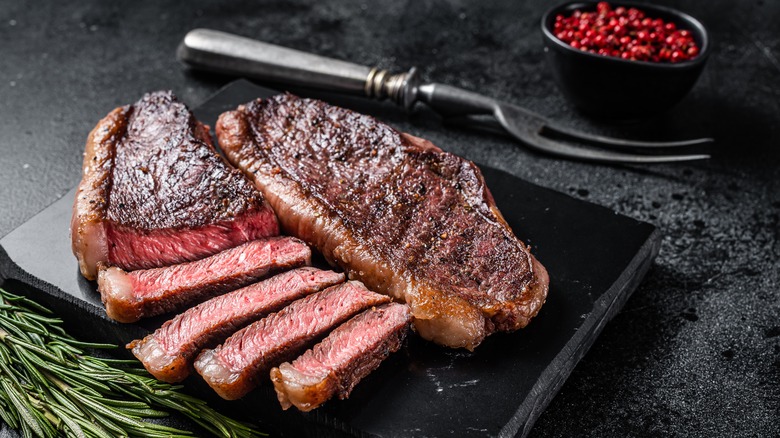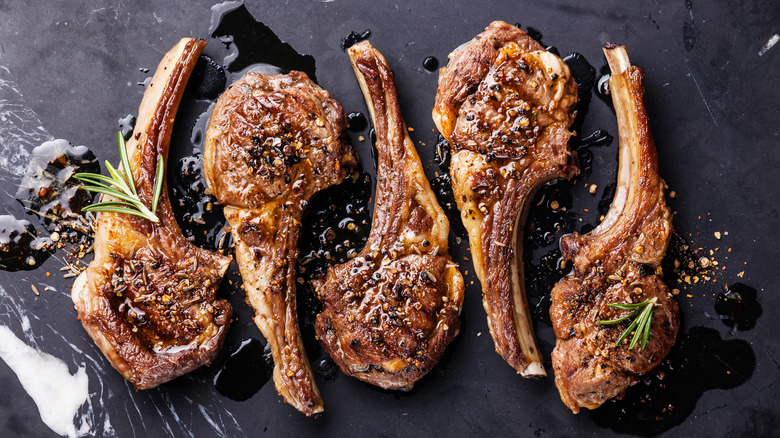Why You Should Always Let Your Meat Rest After Cooking
If you've ever removed meat from its heat source and immediately sliced it, you're doing it wrong. Although it can be hard to stare at that perfectly cooked steak and not dive right in, the process of letting meat "rest" is essential for creating the best flavor profile possible.
What does it mean to let meat rest? According to ThermoBlog, in its simplest terms, it means letting a cut of meat sit off the heat, undisturbed, before you slice and serve it. How long you rest meat can depend on the type of meat and how long it took to cook; don't worry about the meat getting cold, as the resting process won't be long enough for the meat to lose its heat in the center.
So, why is resting the meat such an important step in the cooking process? It all has to do with the meat's protein makeup.
Why should you let meat rest?
As you cook a cut of meat, whether it's a ribeye steak or a chicken breast fillet, the heat travels through the meat to cook it thoroughly at its center.
From a more scientific perspective, the protein fibers go through a firming process during cooking, ThermoBlog explains. The fibers become loose, then coagulate, which firms them up and causes them to release moisture. This means that if you cut a slice of meat as soon as it's off the heat, you'll lose that moisture during the slicing process. Allowing the meat to rest helps those protein fibers to re-absorb the moisture they've lost, which makes for better flavor and texture, as it gives the juices time to redistribute.
The amount of time a piece of meat should rest depends on how long it took to cook. According to Martha Stewart, meat should rest for half of its total cooking time. So, if a steak took 15 minutes to cook, it should rest for about seven minutes. The exception here is when you're cooking large quantities of meat, such as a turkey, which should rest for at least 20 minutes but can be up to 40, according to The New York Times.
Meat should sit at room temperature before cooking, too
Though letting meat sit on your kitchen counter after cooking is imperative, it's also important to avoid cooking meat right out of the refrigerator. The Los Angeles Times explains that tempering, or letting your meat get to room temperature allows for more even cooking, makes for a juicier cut. When the center of the meat is cold, it takes longer for that center to get to its desired temperature of, say, 135 F (for a medium-rare steak). This means the outer portion of the meat could overcook while you're attempting to get that internal temperature to where you want it.
However, when meat sits on the counter for 30 minutes before cooking, it lets the cut reach a more even temperature throughout, which means you can cook that steak to medium rare without the risk of turning the outer portion into a rubber tire.
Food safety is important when cooking meat, and you should never leave it out at room temperature for more than two hours, per the U.S. Department of Agriculture. Neither the process of thawing the meat, nor the resting process, should take more than 30-40 minutes.


